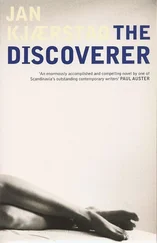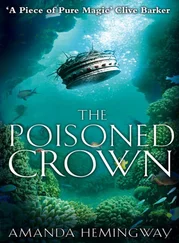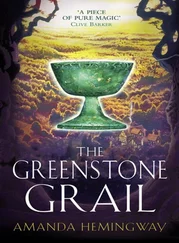But there was also a simpler explanation for the absence of anything to do with Nansen’s polar endeavours: Jonas Wergeland hated snow and ice. He hated skiing. So, even though he had to shoot some scenes by the river Glomma in the south-east of the country in wintertime, this was still less off-putting than having to film on location a lot further north.
The programme’s key scene, for those who may not remember it, depicted an incident which took place during the horrific famine in Soviet Russia in 1921, the most terrible disaster since the Black Death and a situation which became truly precarious after a pitiless drought-ridden summer left the valley of the Volga and large parts of the Ukraine utterly parched, putting twenty million people — some reports said thirty-five million — under threat of death by starvation. Fridtjof Nansen, who was already involved in relief work with prisoners of war and refugees, undertook to lead the rescue mission, for one reason because, as he said, it was his duty , and because he knew he could help, he had faith, he was in fact a land apart, accepted by all the parties involved, and this is what brings him — Fridtjof Nansen, a Norwegian in a broad-brimmed hat, in the wake of his famous speech to the League of Nations assembly in which he appealed to the most elementary humanitarian instincts and deplored their dismissive attitude — into the very midst of that heartrending tragedy on the banks of the Volga where, despite all the Russian intriguing, over the next couple of years he would be instrumental in saving the lives of possibly twelve to thirteen million people while being decried by heartless individuals, his fellow Norwegians among them, for aiding the Bolsheviks. Fridtjof Nansen, in Norway regarded primarily as a sportsman of sorts, but in Europe as a nation in himself, travels from district to district, observing the situation, while on the steppes the winter begins to make itself felt; he sees how people first slaughter dogs and cats and, when that source dries up, eat the thatch from the roofs of their outhouses or pulverized bones and horses’ hooves; in some places they resorted to the graveyards, digging up bodies simply in order to have something in their stomachs, everywhere he looks there are wasted faces and children with swollen bellies. Fridtjof Nansen, hard-bitten polar explorer, travels on, from place to place; around him people are eating grass and earth and it is here, in a small village on the banks of the Volga that Nansen finds himself surrounded by mothers lifting their children up to him to let him see how famished they are, and he has to turn them away, because there is not enough bread to go round; it is standing here, in his heavy overcoat with the fur collar and the familiar broad-brimmed hat, here, faced with these mothers with their starving children in their arms and no food to give them, that he breaks down and dissolves into tears. And this was the scene which Jonas Wergeland spun out and spun out, shots of the powerful body shaken by sobs, the valiant hero and the tears streaming and streaming.
When it came to the regular spot when Jonas stepped onto the set to talk to his central character, in this case it was more to offer comfort, since Nansen, in the shape of Normann Vaage, was so distressed that Jonas’s tentative inquiries as to what he had written about the Eskimos and how he felt about having an asteroid called after him, were simply dismissed as if they had nothing to do with him. By centring everything around this scene Jonas also managed to bring out an aspect of Nansen’s character which he felt that a lot of people overlooked: his melancholia, his introversion, his depressive personality. In Jonas Wergeland’s version of Nansen’s story, tears took the place of skis.
It must also be said that at no time have more people in Norway shed tears at one and the same time as when this programme was shown. Not because the images deliberately set out to elicit such a reaction, but because in its simple and fundamental clash between the moral obligation and the agonizing sense of impotence, it had something of the same heart-rending effect as the pictures from the horrendous famine in Ethiopia and Somalia in the eighties — and this despite the fact that it was a dramatized incident from a distant chapter in history.
But what I have presented here is really only a pale outline of the programme, and I ought at the very least to say that it did also contain other elements, the most telling of these being a shot that cut from the scene by the Volga, from a close-up of Nansen’s eyes, to a scene with him as a young man sitting hunched over a microscope, studying nerve fibres: this too a voyage of discovery of sorts, inasmuch as the hunt for the axons and cells of the nervous system led out into the great unknown, with the aim, as he himself put it, of discovering the wellspring of thought, the hidden secret of life. To Jonas Wergeland, this nervous system represented the very key to Nansen’s life, so much so that Jonas tended to construe his journey across Greenland on skis as an expedition by Nansen into his own emotional life, and Nansen’s oceanographic surveys, particularly those relating to the currents, as an attempt to chart the central nervous system of the ocean. Jonas Wergeland also made much of the image of the young curator of zoology, newly returned from a crucial visit to Italy where he had learned various scientific processes, including how to dye preparations, studying the nervous system of invertebrates under the microscope — a study which was to bear fruit in his controversial and only belatedly acclaimed thesis The Structure and Combination of the Histological Elements of the Central Nervous System , which showed, among other things, how the nerve fibres split to form a ‘T’-shape having once penetrated to the innermost root of the spinal cord. A smooth crosscut between the Volga scene and this laboratory scene was achieved by dissolving the shot of the nerve fibres under the microscope into that of the starving mass of humanity.
In every programme in the Thinking Big series, Jonas Wergeland focussed on one prop, one detail which epitomized some vital characteristic of the hero in question. In Ole Bull’s case, it was the diamond set into his violin bow; with Fritjof Nansen it was the microscope — and positively not the sextant.
The most audacious feature of this programme, however, and one which only the experts and those with a particular interest in the subject picked up on, were certain technical experiments. One of these concerned the Northern Lights which are not, of course, found in the Ukraine but which were in fact the aurora borealis, as Nansen himself had so often described them: drifting, shifting clouds of light, a silvery, iridescent haze, shimmering ripples and tongues of flame expanding and contracting in a restless chase across the firmament before melting away with what sounded like ‘the sigh of a departing spirit’. Jonas Wergeland’s team had filmed actual Northern Lights with a special-effects camera, using time-lapse photography to make the action more dramatic. Then, in the lab, with the aid of an optical printer and masking, they had projected this onto the sky above a weeping Nansen. In this way the Northern Lights were likened to nerve fibres which caused the whole sequence to vibrate or, if you like, the shimmering sky to become the image of Fridtjof Nansen’s inner being.
The other special effect had to do with the sound of pack ice. Nansen was fascinated by the devastating power of the ice. The way he depicted it, it began with a thunderous roar, like a distant earthquake, after which it started to screech and snap all around you, and the ice cracked and shot up on all sides, with a boom like cannon-fire. The audio team endeavoured to create this particular sound by mixing synthesized creaking noises with sound effects, i.e. real sounds, from crushed ice: the sound you get when you drop fresh ice-cubes into a glass of water, those little cracking noises . This sound of pack ice was exactly what Jonas Wergeland was looking for in the scene in which Nansen stands there weeping with the Northern Lights flaring across the sky; gradually they increased it in volume until many viewers actually felt as if they were being squeezed . Some said later that they had squirmed in their armchairs, others that a long shudder ran down their spine, the sort induced by someone running a fingernail across a blackboard. Whatever else they may have felt, the majority were struck, in the scene in which Nansen stood on that steppe beneath a sky scintillating with Northern Lights, weeping before a group of mothers and their starving children, by a sense of primitive forces at work, a sense that something was about to split wide open, to be crushed and dragged under. Those viewers who could not see that the Fram was there in that programme were quite simply lacking in imagination.
Читать дальше












